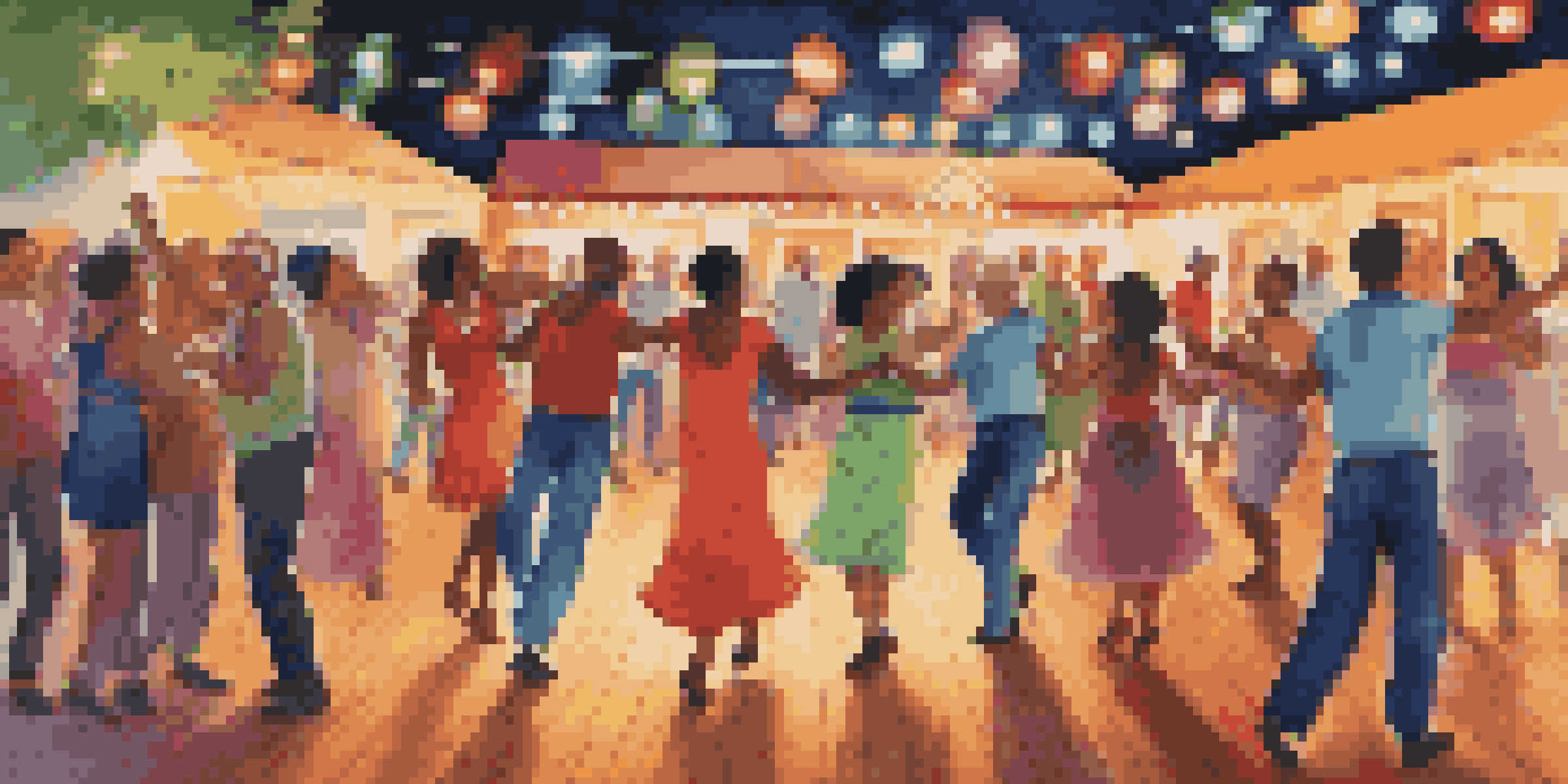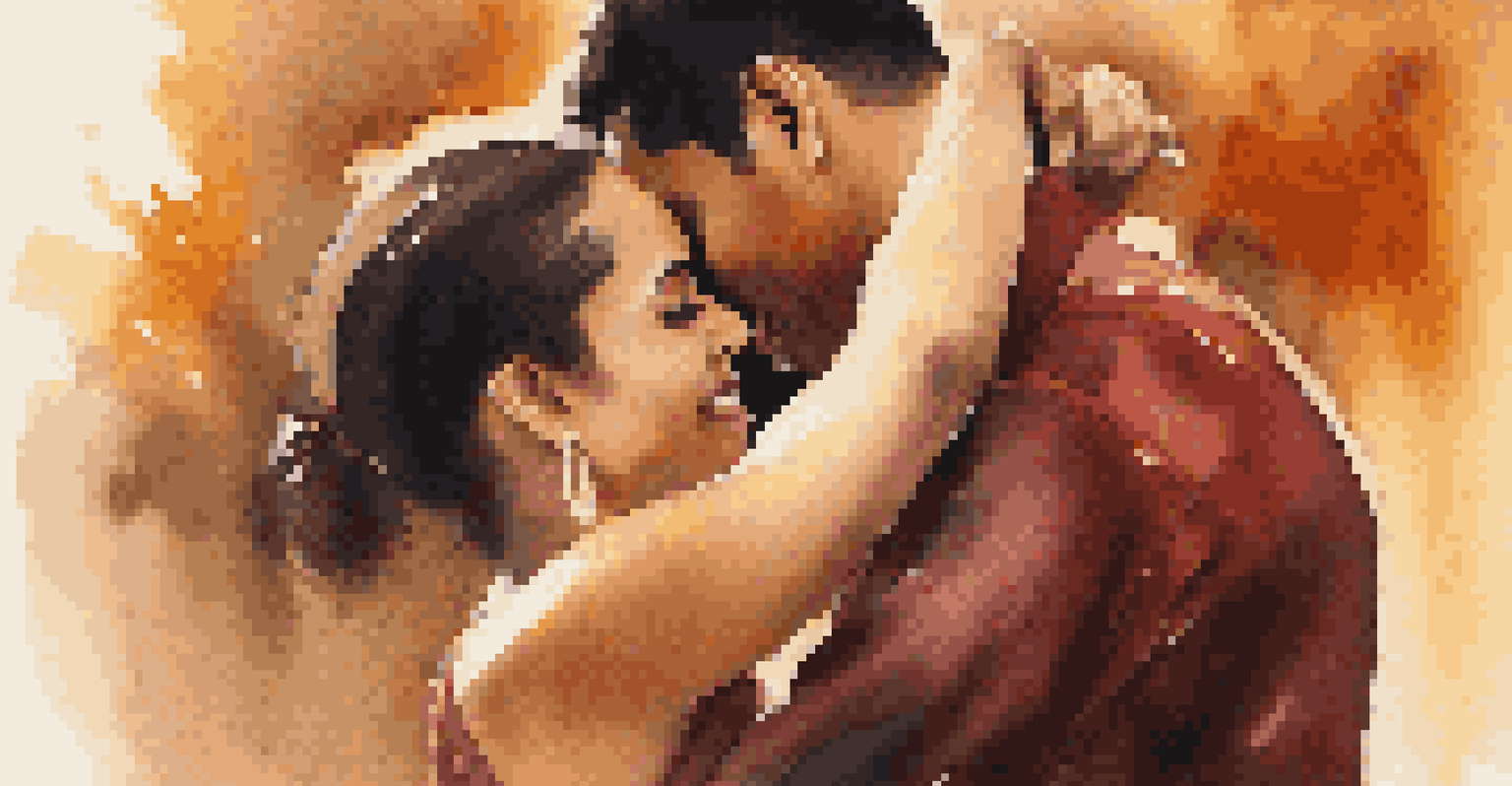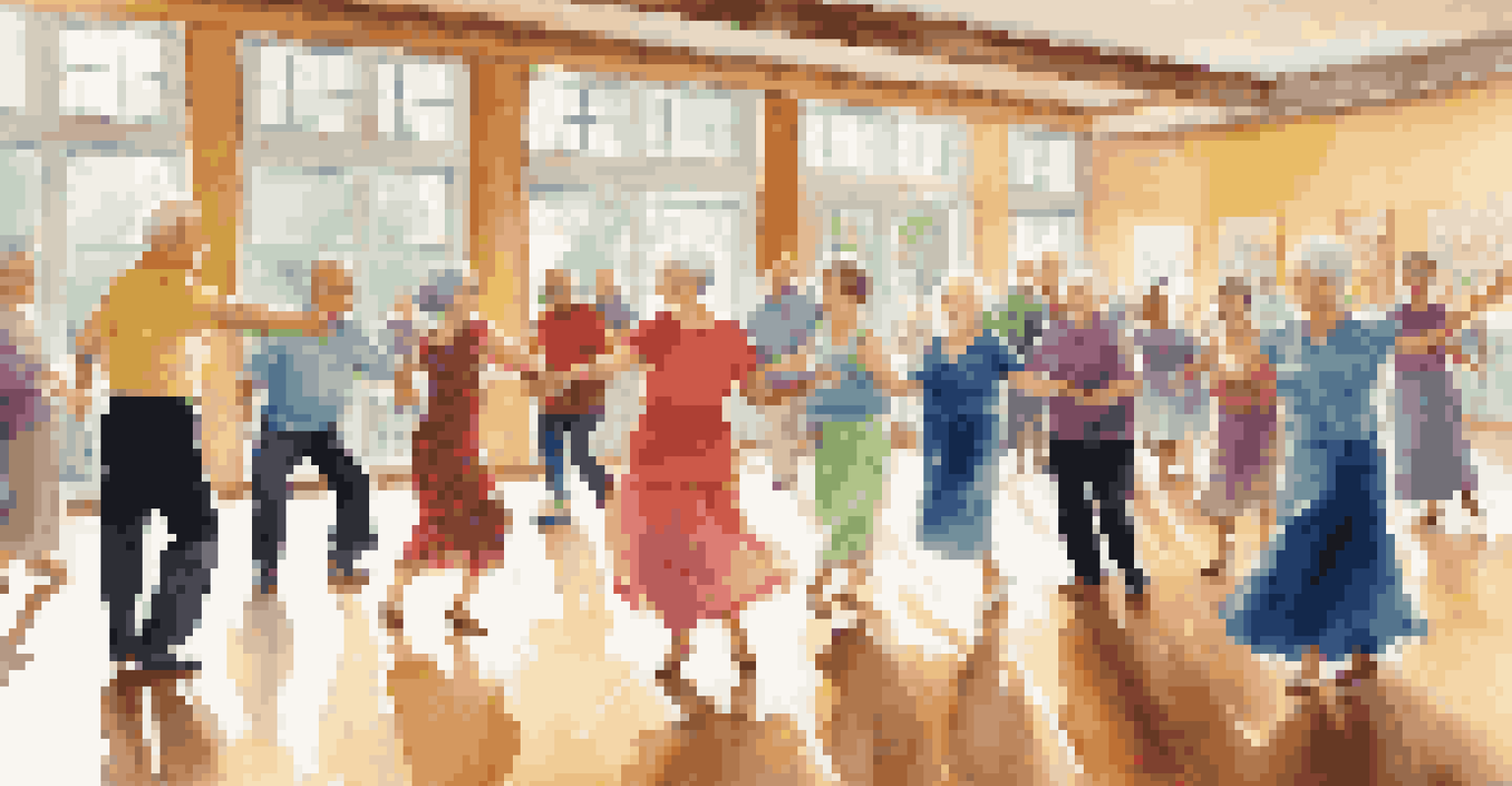Social Dance and Its Effects on Mental Health and Cognition

The Joy of Movement: Social Dance Defined
Social dance encompasses various dance forms performed with others, often in social settings. Think of it as a joyful way to connect with friends or meet new people while moving to the rhythm. Styles can range from ballroom to salsa, each offering a unique experience that brings people together. This communal aspect is what makes social dance particularly special, as it fosters interaction and shared enjoyment.
Dance is the hidden language of the soul.
At its core, social dance is not just about the steps; it’s about the connections formed on the dance floor. When you engage in social dancing, you’re not just exercising your body but also your social skills. It creates an environment where people can express themselves, leading to deeper bonds and a sense of belonging, which is essential for mental well-being.
Moreover, the atmosphere during social dance events can be electric, filled with laughter and smiles. This positivity can be contagious, lifting your mood and providing a break from daily stressors. The blend of physical activity, music, and socialization makes dancing a holistic experience for mental health.
Physical Activity and Mental Health Benefits
Engaging in social dance is a fantastic way to stay physically active, which has well-documented benefits for mental health. Physical activity increases the production of endorphins, often called 'feel-good' hormones, which can lead to reduced feelings of anxiety and depression. Just think of how you feel after a lively dance session—it's hard not to smile!

Additionally, the rhythmic movements involved in dancing can help reduce stress levels. As you immerse yourself in the music and movements, you’re likely to forget your worries, if only for a while. This temporary escape can be rejuvenating and serve as a great way to recharge.
Social Dance Boosts Mental Health
Engaging in social dance enhances mental well-being by fostering connections, reducing stress, and promoting physical activity.
Moreover, regular participation in social dance can improve self-esteem and body image. As you learn new moves and become more comfortable on the dance floor, you may start to feel more confident in yourself. This newfound confidence can have a ripple effect, positively impacting various aspects of your life.
Cognitive Benefits of Dancing Together
Social dance isn’t just a workout for your body; it’s also a fantastic exercise for your brain. Learning dance steps and routines requires concentration and coordination, which can enhance cognitive functions. It’s like a fun puzzle that challenges your mind while keeping you physically engaged.
Dancing is like dreaming with your feet.
Research suggests that engaging in dance can improve memory and attention span, particularly in older adults. The combination of rhythm, pattern recognition, and spatial awareness involved in dancing stimulates brain activity. So, not only are you busting a move, but you're also sharpening your mental skills.
Furthermore, dancing in a social context often involves following a partner or a group, which requires quick thinking and adaptability. These interactions can enhance your problem-solving abilities and cognitive flexibility, skills that are beneficial both on and off the dance floor.
Social Connections and Emotional Well-Being
One of the most profound benefits of social dance is the opportunity to forge meaningful connections. Engaging with others in a relaxed environment fosters friendships and a sense of community. These connections can significantly enhance emotional well-being, providing support and reducing feelings of loneliness.
When dancing with others, you share experiences that create lasting memories, deepening your relationships. Whether it's sharing a laugh after a misstep or celebrating a successful routine, these moments build a sense of camaraderie that is vital for mental health. Positive social interactions have been shown to boost mood and create a sense of belonging.
Cognitive Skills Through Dance
Learning dance steps improves cognitive functions, memory, and adaptability, making it a fun workout for both body and mind.
Moreover, participating in group dance classes or social events can combat social anxiety. As you practice and dance with others, you become more comfortable in social settings, which can reduce feelings of nervousness over time. This gradual exposure can lead to improved social skills and greater confidence in various social scenarios.
Stress Relief Through Expressive Movement
Dance is a powerful form of self-expression, allowing individuals to communicate emotions that might be difficult to articulate verbally. When you dance, you can channel your feelings—be it joy, sadness, or frustration—into movement, providing an emotional release. This aspect of social dance can be incredibly therapeutic, helping you process complex emotions.
Moreover, the immersive experience of dancing can help you enter a state of flow, where you lose track of time and feel completely absorbed in the moment. This state is often associated with reduced stress and heightened creativity, making dance a unique outlet for emotional expression and stress relief.
In essence, social dance offers a safe space to let go of inhibitions and express yourself freely. The joy of moving in sync with others can lift your spirits, allowing you to leave behind the stress of daily life and embrace the present moment.
Dancing for All Ages: Lifelong Benefits
One of the best aspects of social dance is that it is accessible to people of all ages. Whether you’re a child learning to move to music or an older adult looking to stay active, there’s a place for everyone on the dance floor. This inclusivity fosters intergenerational connections, enriching the social experience.
Dancing can be particularly beneficial for older adults, as it helps maintain physical health and cognitive function. Regular participation in dance classes can improve balance, coordination, and flexibility, reducing the risk of falls. It's a fun way to stay active while socializing, creating a win-win situation for mental and physical health.
Inclusive Fun for All Ages
Social dance is accessible for everyone, promoting intergenerational connections while providing physical and emotional benefits.
For younger generations, social dance offers a creative outlet and a way to develop social skills. By participating in group dance activities, children and teens can learn teamwork and communication, along with the joy of shared experiences. These early lessons in social interaction can contribute to healthier relationships throughout life.
Finding Your Groove: Getting Started with Social Dance
If you’re interested in reaping the mental health benefits of social dance, getting started is easier than you might think. Many communities offer dance classes or social events, providing a welcoming environment for beginners. Whether you choose salsa, swing, or line dancing, the key is to find something that excites you.
Consider looking for local dance studios or community centers that host events. Many places offer trial classes, so you can dip your toes in without a heavy commitment. Plus, you’ll meet others who are also looking to connect through dance, making it a great way to expand your social circle.

Remember, the goal is to have fun and enjoy the movement. Don’t worry about perfection—everyone is there to learn and enjoy themselves. Embrace the experience, and you might just find that social dance becomes a cherished part of your life, enhancing your mental health and overall well-being.